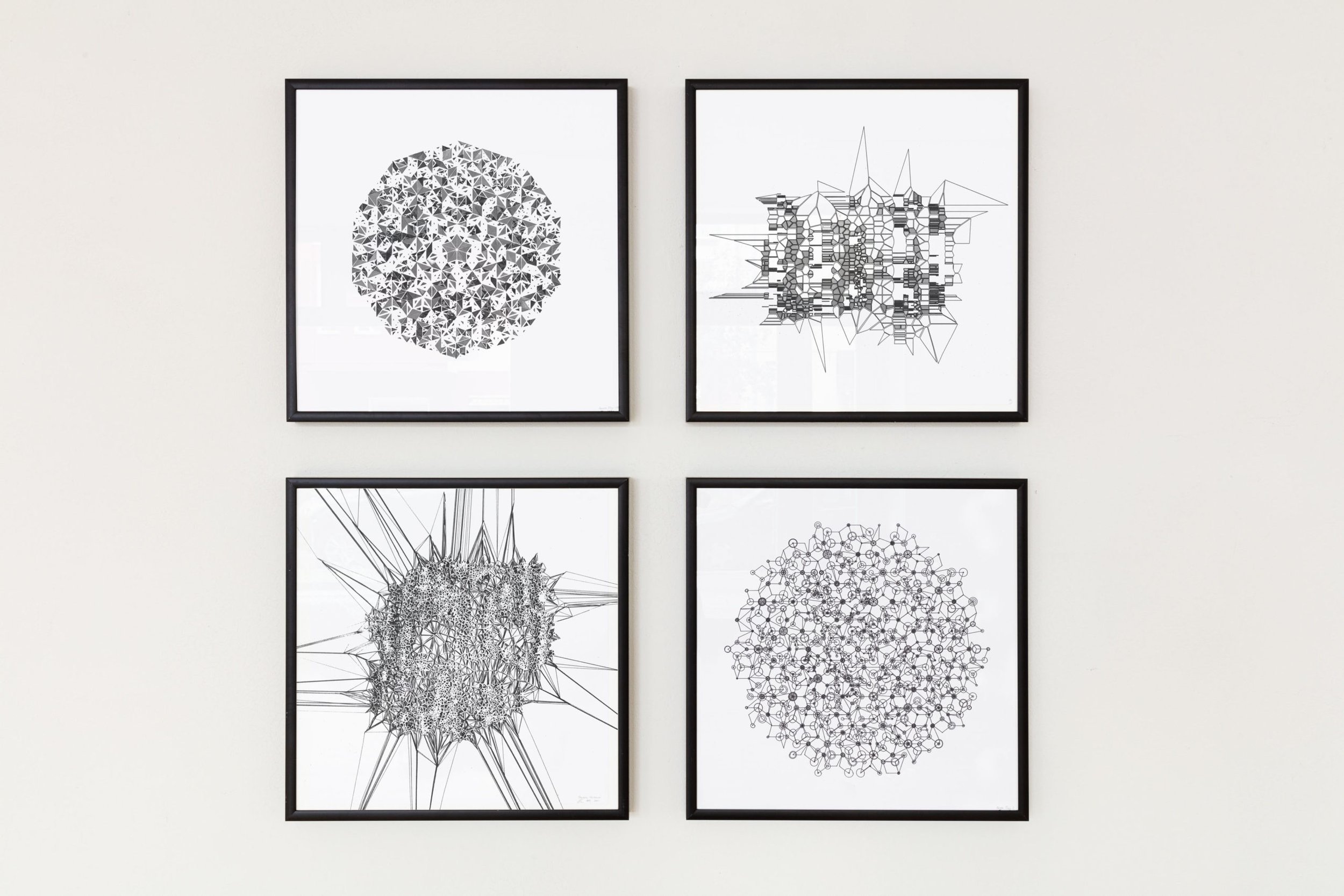REMOTE CONTROL brings together 5 artistic positions from the USA, UK, Japan and Austria who work in the field of generative art. The practice of these artists - on the one hand digital in conception and on the other hand - analogue in the form of plotter drawings, is characterized by a multidisciplinary approach that includes music, architecture, video and other media, for example.
Jessica In (UK) Architect, designer and programmer.
For the "Neural Piranesi" series, she had Piranesi's complete graphic oeuvre (approx. 1000 architectural depictions) interpreted by AI analysis software and in this way generated new compositions that take up the fantastic design language of the original capriccios and continue them conceptually.
In her "Penrose Tile Drawings" she draws on the ideas of the mathematician Roger Penrose, who in the 1970s was looking for ways to develop patterns that unfold in endless ways and never repeat themselves.
David Guerrero (US) artist, musician and programmer creates plotter drawings that are surprisingly more reminiscent of manual-analogue charcoal drawings in terms of their aesthetics. The precision of the digital machine is thwarted here and the drawing process combines gestural traces with the clarity of a programmed form.
Carl Lostritto (US) Professor at the College of Architecture and Design, in Knoxville, Tennessee. “Natural systems” often play a role in his process of finding structures. The algorithms on which the drawings are based are based on these processes of growth, branching and cluster formation, without simply illustrating them.
In his works, Manuel Tozzi (AU) plays with the simple bitmap aesthetics of computer programs from the 1980s. In this retrospective look at a bygone epoch of technology lies the knowledge that each of these pictures, in their apparent naivety, also tells of the tremendous changes that took place in their wake.
Hiromasa Fukaji (JP) chooses natural phenomena as the starting material for his plotter drawings. The precise observation of these processes anchored in nature seems to be too complex to be able to translate them into algorithms. However, Fukaji succeeds in creating surfaces of water, wood or rock that do not repeat nature, but depict something of the elementary fascination of their construction. In the technical image, nature does not lose its aura; on the contrary, the digital form gains it.

